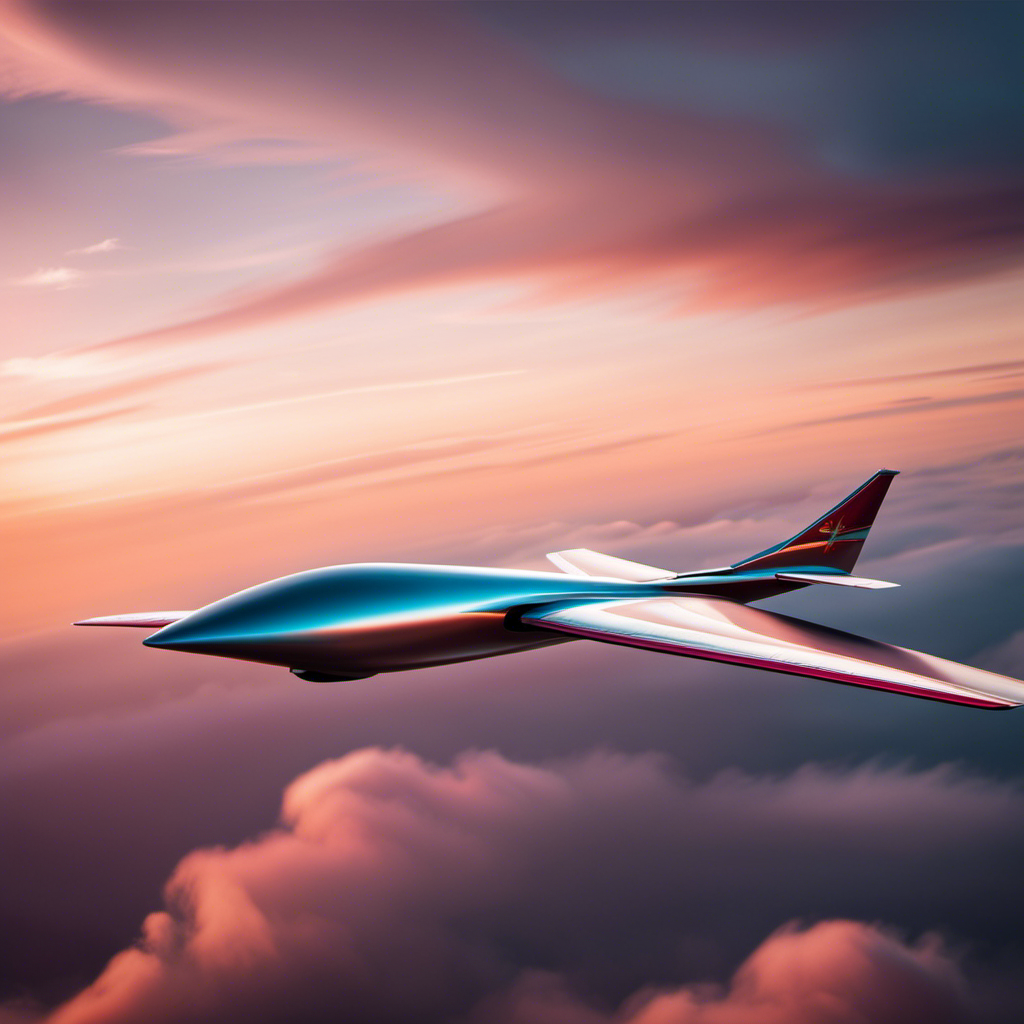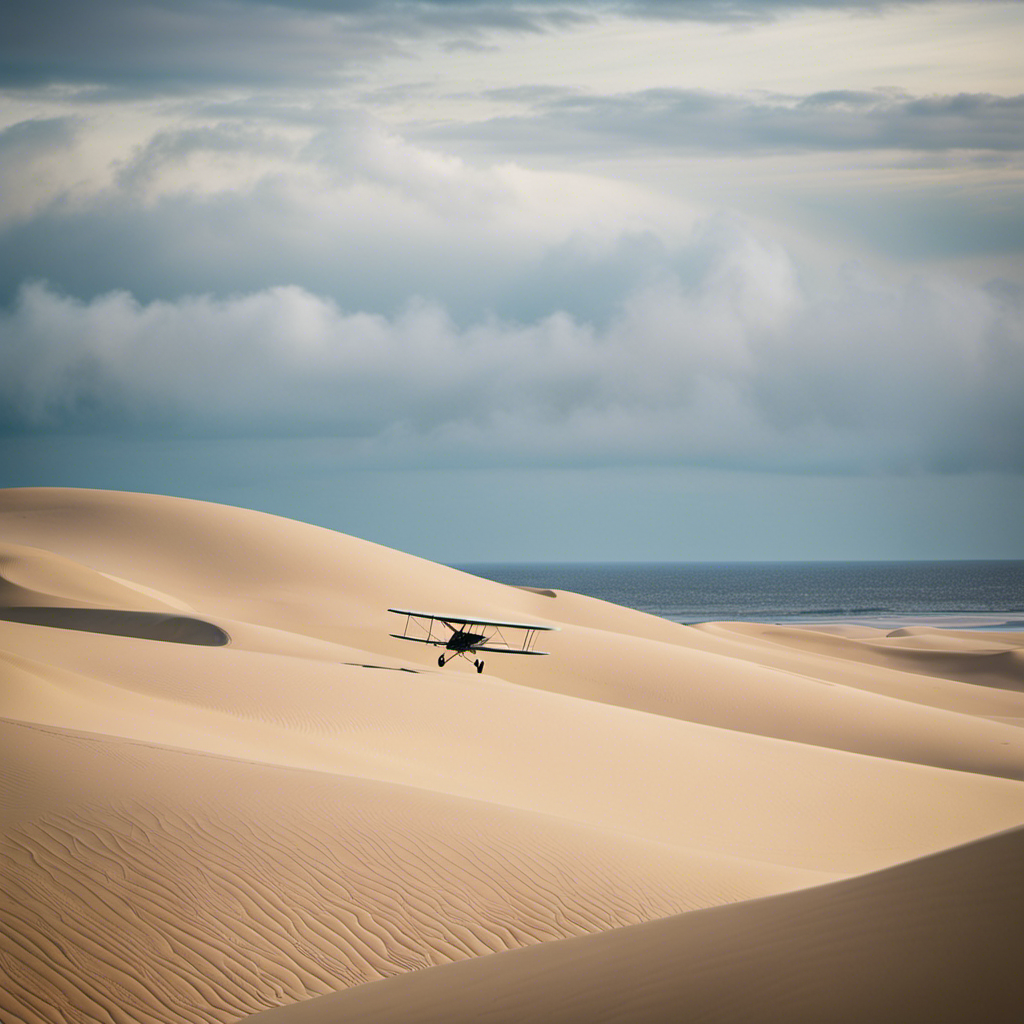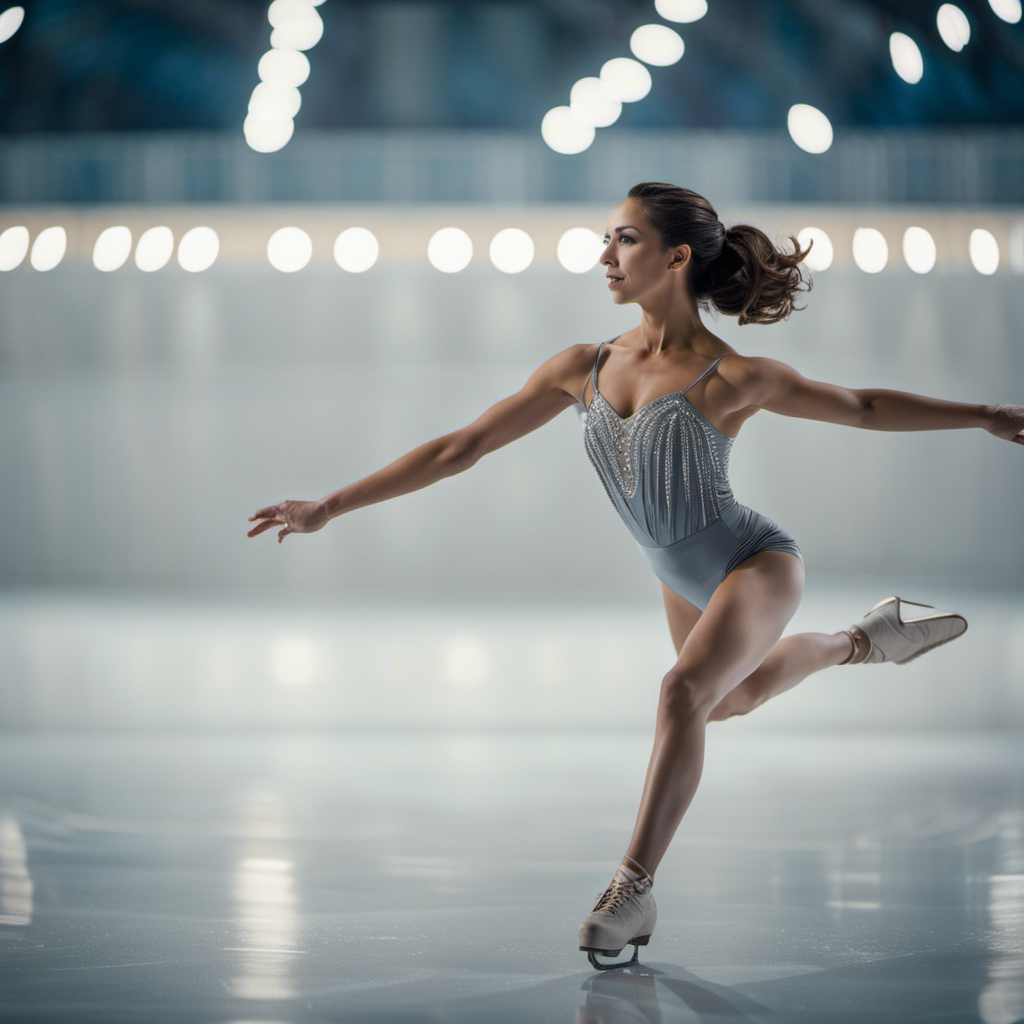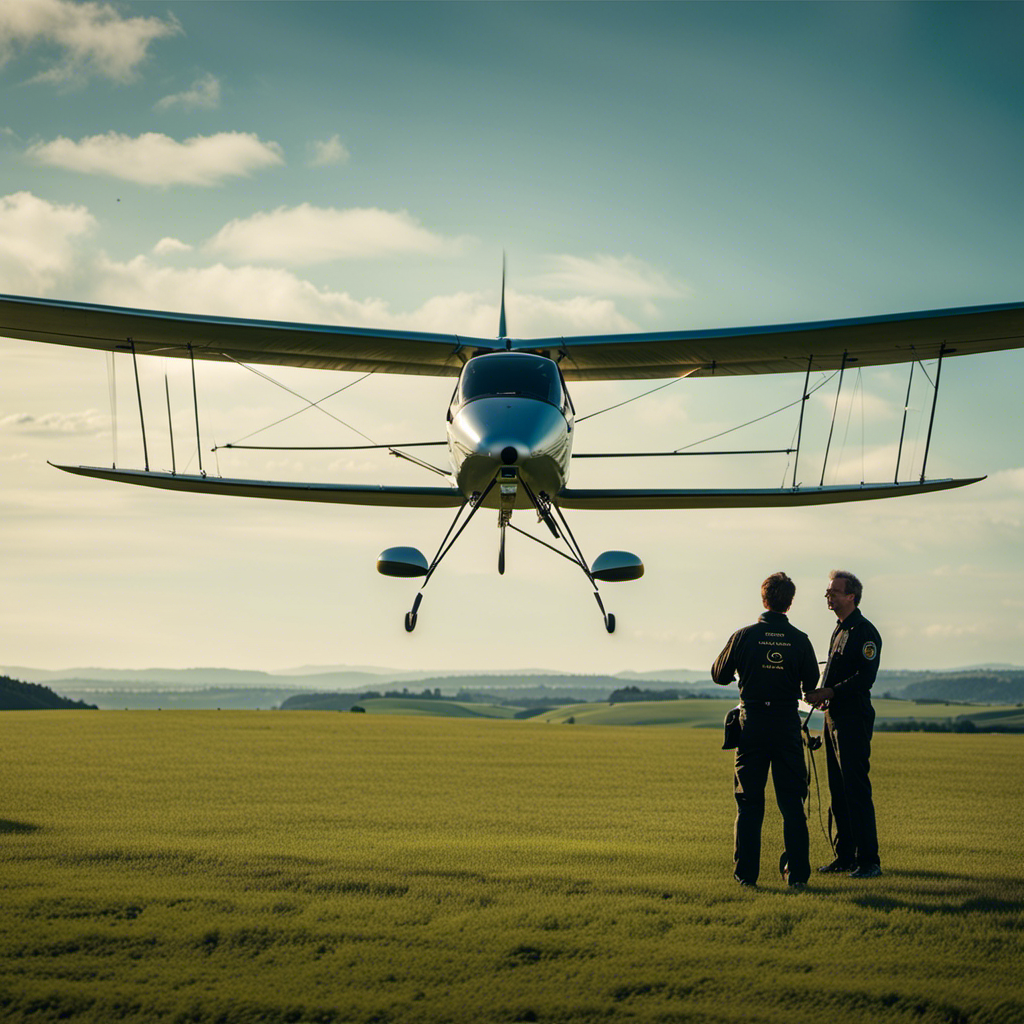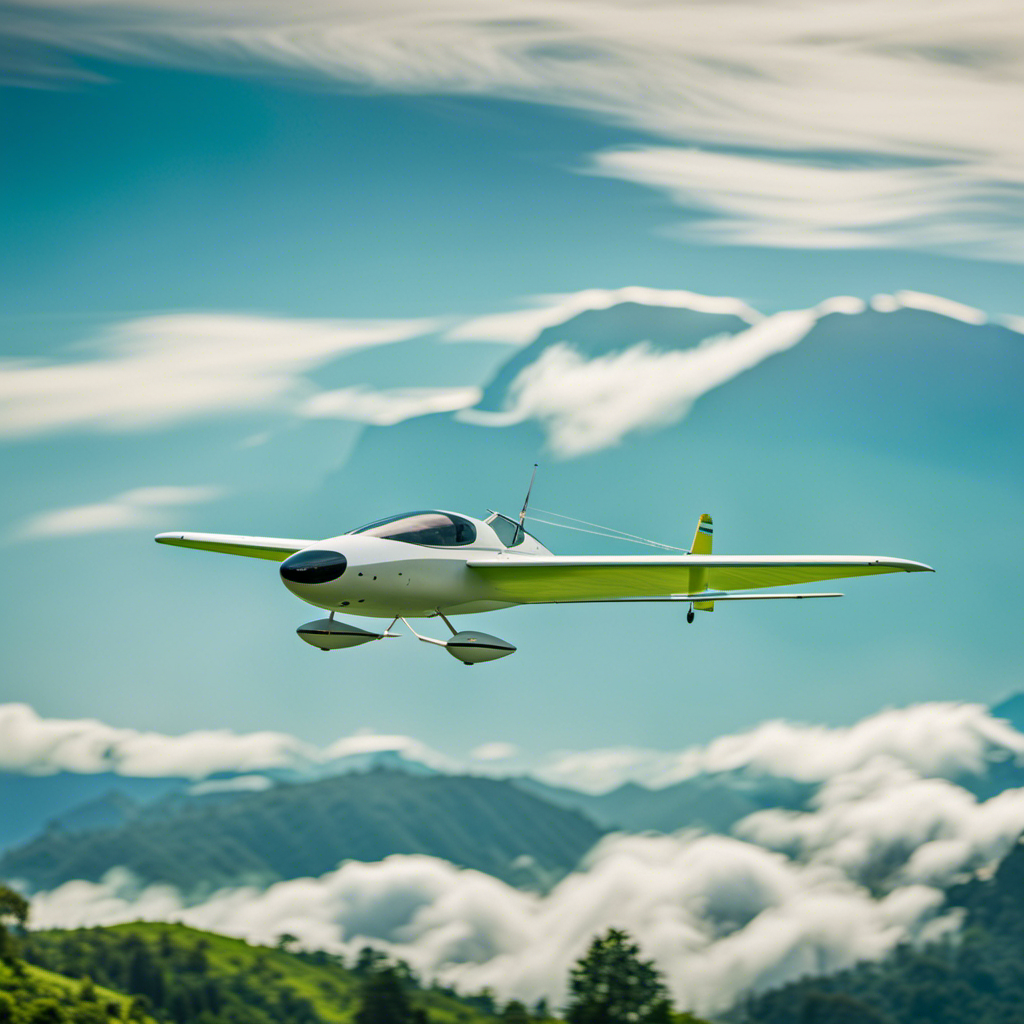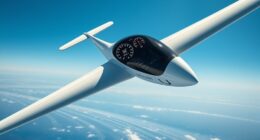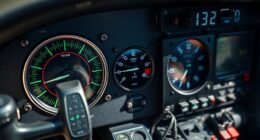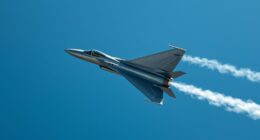Imagine soaring high above, effortlessly gliding through the sky in peaceful silence, without the roar of an engine. This is the essence of the glider experience.
In this article, we will explore the world of gliders and uncover the mechanics behind their flight. From the history of gliders to the different types and how they stay aloft, we’ll delve into the fascinating world of these engineless aircraft.
So buckle up, or rather, buckle in, as we embark on this exhilarating journey into the world of gliding.
Key Takeaways
- Gliding offers a thrilling experience of pushing skills to the limit and experiencing the exhilaration of soaring.
- Gliders provide a unique perspective to explore the beauty of nature and challenge piloting abilities.
- Gliding involves aerobatic maneuvers and strategic decision-making, connecting individuals with like-minded pilots.
- Gliders are environmentally friendly, promoting sustainable aviation practices and a greener approach to flying.
Definition and Basic Mechanics of Gliders
A glider is an aircraft that flies without an engine, relying on natural forces such as gravity and air currents to stay aloft. Gliders are designed to have a high lift-to-drag ratio, allowing them to glide for long distances with minimal power input.
The basic mechanics of a glider involve harnessing the energy from the surrounding air. As the glider moves through the air, the wings generate lift by creating a pressure difference between the upper and lower surfaces. This lift force counteracts the weight of the glider, allowing it to stay airborne.
History of Gliders and Early Flight
You’ll learn about the history of gliders and early flight. Gliders have been used for centuries, dating back to ancient civilizations. Here are some fascinating facts about the history of gliders:
- The first recorded attempts at gliding were made by the ancient Chinese and Greek civilizations.
- The famous Leonardo da Vinci designed and sketched several glider-like machines in the 15th century.
- The Wright brothers, Orville and Wilbur, made significant contributions to glider history with their experiments in the late 19th and early 20th centuries.
- Glider technology advanced rapidly during World War II, with the development of military gliders for tactical purposes.
Now that you have an understanding of the history of gliders, let’s explore the different types of gliders and their unique characteristics.
Different Types of Gliders
Now let’s dive into the various types of gliders and their distinctive features.
Gliders come in different shapes and sizes, each designed for specific purposes. The most common type is the sailplane, which is built for long-distance flights and soaring. These gliders have sleek, aerodynamic designs and often feature high aspect ratio wings for maximum lift.
Another type is the hang glider, which is a smaller, lighter glider that is typically controlled by shifting body weight. Hang gliders are known for their simplicity and agility, making them ideal for recreational flying.
Additionally, there are motor gliders that combine the features of a glider and a small engine. This allows them to take off and climb like an airplane and then switch to gliding mode for extended flights.
Understanding the different types of gliders gives us a foundation for exploring how these aircraft stay aloft without an engine.
How Gliders Stay Aloft Without an Engine
To understand how these aircraft stay aloft without an engine, you might be curious about the principles of aerodynamics. Gliders rely on the same principles that allow birds to soar through the sky.
The key concept here is lift, which is generated by the difference in air pressure between the upper and lower surfaces of the glider’s wings. As the glider moves forward, air flows over the wings, creating a higher pressure underneath and a lower pressure above. This pressure difference causes the glider to rise, counteracting the force of gravity.
At the same time, drag, which is the resistance that opposes the glider’s forward motion, plays a crucial role in controlling the glider’s speed and descent. Understanding the interplay between lift and drag is fundamental to comprehending the art of glider flight.
The Role of Lift and Drag in Glider Flight
The role of lift and drag in glider flight is crucial to understanding how these aircraft stay aloft without an engine. To grasp this concept, consider the following:
-
Lift: This upward force is generated by the difference in air pressure above and below the wings. It counteracts the force of gravity and keeps the glider airborne.
-
Drag: This resistance force acts opposite to the direction of motion and is caused by the interaction between the glider and the air. It must be minimized to maximize the glider’s efficiency.
-
Angle of Attack: This is the angle between the wing’s chord line and the oncoming airflow. It determines the amount of lift and drag produced.
-
Glide Ratio: This is the ratio of the horizontal distance traveled to the vertical distance descended. A higher glide ratio indicates a more efficient glider.
Understanding the interplay between lift and drag is essential for comprehending glider flight. Now, let’s explore the factors that affect glider performance.
Factors Affecting Glider Performance
One of the factors affecting glider performance is the angle of attack. The angle of attack refers to the angle between the wing’s chord line and the direction of the oncoming airflow. It plays a crucial role in determining the lift and drag forces acting on the glider. By adjusting the angle of attack, a pilot can control the glider’s lift and overall performance.
To understand the impact of angle of attack on glider performance, let’s take a look at the following table:
| Angle of Attack | Lift Coefficient | Drag Coefficient |
|---|---|---|
| -2° | 0.1 | 0.02 |
| 0° | 0.4 | 0.05 |
| 2° | 0.8 | 0.12 |
| 4° | 1.3 | 0.22 |
| 6° | 2.0 | 0.38 |
As the angle of attack increases, so does the lift coefficient. This means that a higher angle of attack generates more lift, allowing the glider to stay airborne. However, it also increases the drag coefficient, which can reduce the glider’s overall performance.
Understanding the relationship between the angle of attack and these coefficients is essential for optimizing glider performance and achieving efficient flight. By finding the right balance, glider pilots can maximize lift while minimizing drag.
Now that you have a better understanding of the factors affecting glider performance, let’s explore the safety measures and training for glider pilots.
Safety Measures and Training for Glider Pilots
Safety measures and training are essential for glider pilots to ensure their proficiency and minimize the risk of accidents. As a glider pilot, you must undergo comprehensive training that covers various aspects of flying, including aerodynamics, meteorology, navigation, and emergency procedures.
It is crucial to understand the principles of glider flight and the importance of following established safety protocols. This includes conducting thorough pre-flight inspections, using proper safety equipment, and adhering to air traffic control instructions.
By consistently practicing these safety measures and participating in ongoing training programs, you can enhance your skills and maintain a high level of safety in the air.
With a solid foundation in safety, you can then explore the exciting world of recreational and competitive uses of gliders, where you can challenge yourself and enjoy the thrill of soaring through the skies.
Recreational and Competitive Uses of Gliders
Participating in recreational and competitive gliding events allows you to push your skills to the limit and experience the exhilaration of soaring through the skies.
Gliders are not just for leisurely flights; they can be used in various exciting ways. In recreational gliding, you can explore the beauty of nature from a unique perspective, gliding silently through the air.
Competitive gliding, on the other hand, challenges your piloting abilities as you strive to outperform other pilots in precision, speed, and distance. These events often involve aerobatic maneuvers and strategic decision-making.
Whether you enjoy the tranquility of recreational gliding or the adrenaline rush of competitive events, gliding offers a thrilling and unforgettable experience.
Now, let’s delve into the world of gliding clubs and communities, where pilots come together to share their passion for this amazing sport.
Gliding Clubs and Communities
Joining a gliding club is a fantastic way to connect with like-minded individuals who share your passion for soaring through the skies. Not only will you have the opportunity to fly alongside experienced glider pilots, but you’ll also become part of a close-knit community that is dedicated to the sport of gliding.
As a member of a gliding club, you’ll have access to top-notch facilities and resources that will help you improve your flying skills and knowledge. You can participate in various club events, such as competitions, cross-country flights, and social gatherings. Additionally, gliding clubs often offer training programs for beginners, allowing you to learn the ropes and progress at your own pace.
By joining a gliding club, you’ll not only enhance your flying abilities but also build lifelong friendships with fellow glider enthusiasts.
Transitioning into future developments in glider technology, it is clear that the advancements in this field will revolutionize the sport even further.
Future Developments in Glider Technology
As technology continues to advance, the future of gliding is shaping up to be even more exciting and innovative.
With advancements in materials, aerodynamics, and energy efficiency, gliders are set to soar to new heights. Lightweight carbon fiber composites are replacing traditional materials, reducing weight and improving performance.
Aerodynamic design improvements, such as laminar flow wings and drag reduction techniques, are allowing gliders to achieve increased lift and glide ratios.
Additionally, the integration of electric and hybrid propulsion systems is revolutionizing gliding, enabling longer flights and reducing dependency on external resources.
Modern avionics and navigation systems are also enhancing safety and pilot situational awareness.
The future of gliding holds the promise of faster, more efficient, and environmentally friendly aircraft, providing even greater opportunities for pilots to experience the freedom of flight.
Frequently Asked Questions
Are gliders only used for recreational purposes, or are there other practical applications for them?
Glider aircraft have practical applications beyond recreation. They are used for aerial surveying, atmospheric research, and even military operations. Their ability to fly silently and glide long distances makes them ideal for various missions requiring efficiency and stealth.
How do glider pilots navigate and find thermals to stay airborne for longer periods of time?
To navigate and find thermals, glider pilots rely on their knowledge of weather patterns, terrain features, and visual cues. Like a skilled bird soaring effortlessly on air currents, they skillfully ride thermals to stay airborne for longer periods.
What are the regulations and certifications required to become a glider pilot?
To become a glider pilot, you must meet certain regulations and obtain the necessary certifications. These include a medical certificate, a student pilot certificate, and a glider pilot license issued by the FAA or an authorized organization.
Can gliders fly at night or in adverse weather conditions?
No, gliders cannot fly at night or in adverse weather conditions due to their lack of an engine and limited instrument capabilities. Glider pilots must follow strict regulations for safe flying conditions.
Are there any limitations to how high or how far a glider can fly?
Glider performance is limited by factors such as altitude, weather conditions, and pilot skill. The altitude a glider can reach depends on its design and the availability of thermals or updrafts. Distance is limited by wind conditions and the glider’s ability to maintain lift.
Conclusion
Congratulations! You’ve now soared through the captivating world of gliders, experiencing the exhilaration of flight without an engine.
You’ve learned about the intricate mechanics of gliders, the history of their development, and the essential role of lift and drag in their flight.
With safety measures and training, you’re ready to embark on your own gliding adventures.
Whether for recreation or competition, gliding offers a unique and awe-inspiring way to connect with the skies.
So spread your wings and let the winds carry you towards the horizon, where the future of glider technology awaits.
